Recently updated on July 3rd, 2025
The variety of training and learning platforms available today make it possible for training and educational providers to deliver both synchronous and asynchronous forms of training.
There are platforms available that suit either type, and many that suit both, particular with the range of platform integrations available. To show you the top choices are this article covers the top choices, their pros and cons, to give you the information you need to build out a training tech stack that helps you deliver the best possible training for your learners.
However, before doing so its important to be clear what we mean by asynchronous and synchronous learning.
What is synchronous learning?
Synchronous learning refers to real-time, interactive forms of education or training where students and instructors participate simultaneously in a live format. Think classroom education or workshops. Synchronous learning can take place in person or virtually.
What are the pros and cons of synchronous training?
Advantages
Real-time interaction
Students can engage directly with instructors and peers, allowing for immediate feedback, questions, and discussions.
Improved motivation
The live, interactive nature of synchronous learning can be more engaging and motivating for students compared to asynchronous methods.
Sense of community
It fosters a stronger sense of connection and community among learners, replicating some aspects of traditional classroom experiences.
Disadvantages
Reduced flexibility
Unlike asynchronous learning, students have less control over when they engage with the material.
What is asynchronous training?
Asynchronous learning is a form of education where students and instructors are not required to participate in learning activities at the same time or place, but rather students can complete the learning at their own pace, in a place of their choosing. Think self paced courses as an example.
You may see asynchronous learning referred to as ‘self paced’ learning or training.
What are the pros and cons of asynchronous training
Advantages
Flexibility and convenience
Learners can access materials and complete assignments at their own pace and on their own schedule, making it ideal for those with busy lives or varying time commitments.
Personalized learning experience
Students can focus on specific topics of interest, skip familiar content, and revisit materials for better understanding and retention.
Accessibility
Asynchronous learning is accessible to a broader audience regardless of geographic location or time zones, promoting a diverse and inclusive learning environment.
Disadvantages
Limited real-time interaction
The lack of real-time interactions can make it challenging for learners to ask questions, seek clarification, or receive immediate feedback, potentially slowing down their learning progress.
Why training provides need software capable of delivering both forms of training
The top three reasons why training providers need software capable of delivering both forms of training are:
Accommodate different learning preferences
Learners have different preferences and needs when it comes to training. Some thrive in live, interactive environments, while others prefer the flexibility of self-paced learning. Offering both synchronous and asynchronous options allows you to cater to a wider audience and make sure that your training is effective for diverse learning styles.
Expanded market reach
Offering both synchronous and asynchronous training formats allows providers to reach a broader audience. You can use synchronous sessions can cater to offer live, interactive training programs in specific time zones, both in-person and virtually.
While asynchronous training programs or individual modules gives you opportunities to expand what you offer to learners in different geographic locations and time zones.
More revenue opportunities
Diverse training formats can create additional revenue opportunities. For example, asynchronous courses can be sold as on-demand products, generating passive income.
Synchronous training programs can be offered at premium prices due to their interactive nature. For example, you could offer a corporate training program to companies both as in-person live option or in a live virtual format.
Top platforms for Asynchronous and Synchronous training 2024
Before looking at individual platforms that are better suited to ether asynchronous or synchronous training, its important for you to know what platforms can help with both types, as these are the platforms you’ll require if you want to offer training that fits into both categories:
1. Arlo + Moodle- the integration of a leading training management system (TMS) and a leading learning management system (LMS)
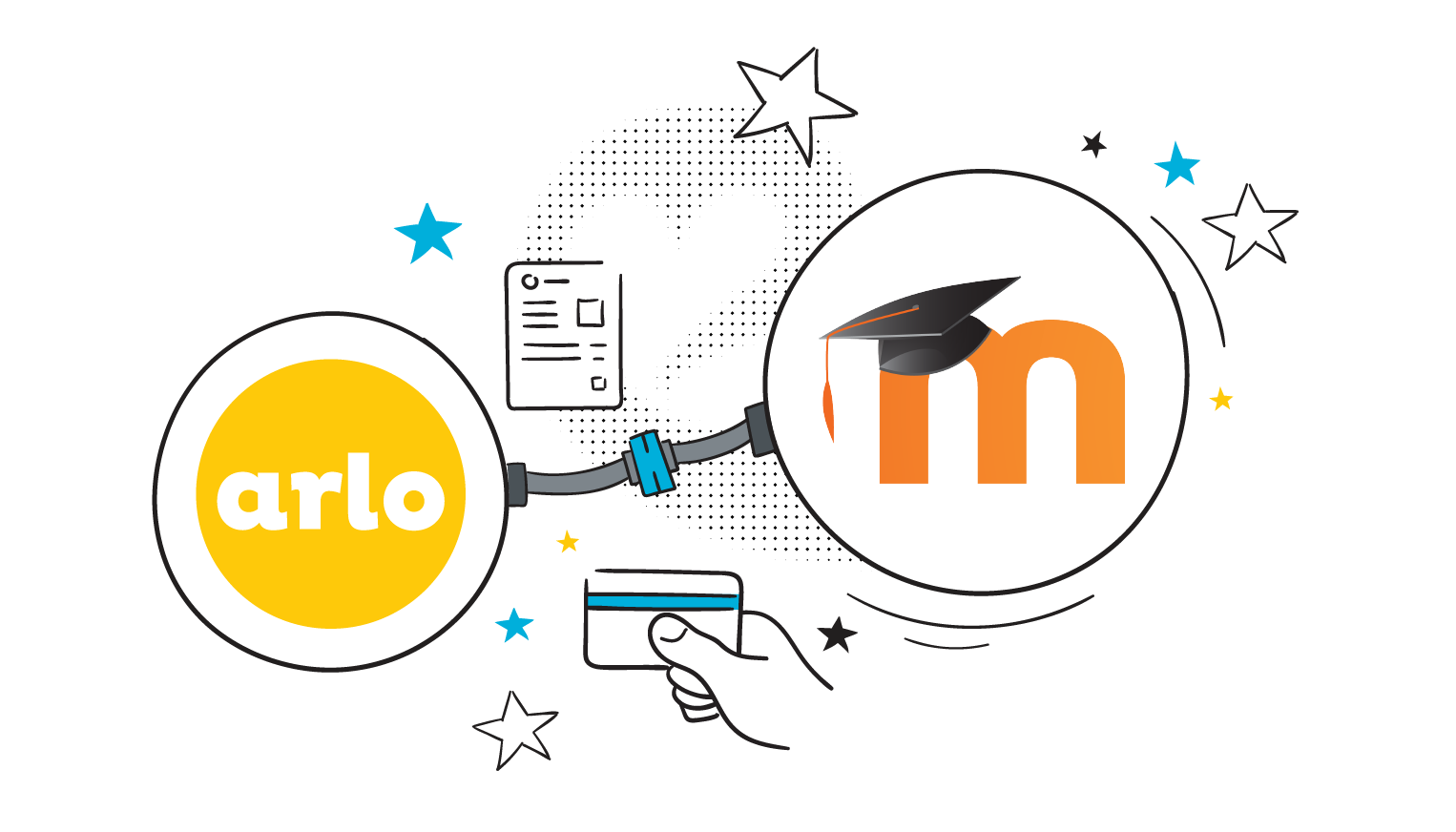
The most robust set-up you can have to deliver asynchronous and synchronous is having a training management and learning management system in place. A training management system will help you manage deliver and synchronous training, while you need an LMS for asynchronous training.
You can learn more about the differences between the two types of software in our article: LMS vs TMS – what’s the difference?
Arlo – the number #1 TMS
Arlo is the #1 training management platform that contains everything you need to deliver asynchronous training. It’s an all-in-one system
Course management features to automate training admin
Through Arlo you can create new asynchronous courses using templates, and publish them your website in minutes. A course template library gives you access to templates that prefill key information for quick scheduling of repeat courses that re-run on multiple dates and locations.
Each template supports face-to-face, live-online, blended and eLearning, so you can really use Arlo to create and run every common type of training. If you have a library of courses already, you can bulk upload up to 200 courses at a time to Arlo, and if you’ve integrated Arlo with your website, you can schedule any uploaded or new courses you create to your website with a few clicks.
Other key course management features Arlo provides:
- Task management features that give you a full view of your upcoming, instructors, venues and more.
- Features to automate all of your training communications, use pre-set branded, email templates for course registrations, payments, reminder surveys and more. Send personalized certificates on course completion and schedule reminders before they expire.
- Access to the Arlo app that you can us to manage course registrations, record attendance, check payments and mark grades on the go.
Course registration and payments
Arlo’s course registration features are designed to maximize course registrations, while providing your participants with the best experience possible. Registration forms are available for paid and free courses – for paid courses use the standard form that includes a full order and invoicing process.
For free courses, use a simple one-page registration form that once complete triggers an automatic email to the registrant containing all of the course or course information, such as time, location etc.
Every time a registrant completes a form their details sync to Arlo in the form of a new customer record, or updates their existing record. Multiple registrants can be added to a single form, and a registrant can sign up for multiple courses in the same form, helping to make their registration process as simple as possible.
To help maximize registrations and revenue you can add discounts, recommended additional courses, merchandise purchasing opportunities and more.
Other course registration features include:
- Take payments via Stripe, PayPal, Windcave and more
- Automatic invoice creation and sending when a course booking is confirmed
- View and manage historical, paid and unpaid orders
- Flexible payment options for registrants such as credit card, invoice and bank transfer
- Integrations with leading accounting systems, such as Quickbooks and Xero.
Real-time reporting and an in-built CRM
Arlo contains a wide range of features that help training providers produce various type of reports to see how their courses are performing, and an in-built CRM to make managing customer relationships nice and easy.
Here’s a more detailed over of these features:
Reporting:
The types of registration reports you can create within Arlo are:
Registration reports
Registration reports are crucial for understanding how your registrants are behaving and performing. You can generate reports to track and analyze registration data, such as course attendance by organization or registration trends over time.
For example, you might need to report on how many people from a specific organization have registered for courses since a certain date. Using advanced registration reports, you can include additional information like departments, providing a comprehensive view of your data.
Order reports
Order reports help you understand your financial performance. You can create reports to find out how much revenue your training business has generated over a specific period, or identify outstanding balances and billing contacts for follow-up. Advanced order reports allow you to include detailed billing and contact information, helping you manage your accounts efficiently.
Performance reports
Performance reports provide insights into the revenue generated by individual courses. These reports help you identify which courses are most profitable and where to focus your efforts. For instance, you can compare the revenue from different courses, analyze refund amounts, and make data-driven decisions to enhance your course offerings.
Favorites and scheduled reports
To save time, you can save frequently used reports as favorites for easy access. You can also schedule reports to run automatically, sending the results via email to key stakeholders. This ensures you always have up-to-date information without manually running reports each time.
Combining reports for business intelligence
Combining data from multiple reports allows you to gain comprehensive insights into your training business. For example, you can merge performance and expense reports to determine course profitability, or analyze occupancy rates to optimize course scheduling and marketing efforts.
By utilizing both basic and advanced reports, you can gain deep insights into every aspect of your business, helping you make informed strategic decisions and stay ahead of your competition.
CRM
Arlo’s in-built CRM mean you can manage all your training and course contacts in one place. Leads that are captured from your website are automatically synced to Arlo, via a new customer record being created, or an existing one automatically updating.
Within each record you can also view a contacts full communication history, certificates documents and contracts. Use specific data and custom fields to trigger actions and campaigns. And if you already have a CRM such as Salesforce, HubSpot or Dynamics 365 you can integrate Arlo with these platforms so data flows seamlessly from your website into Arlo and then into your CRM.
Website integration or a brand new training website free with your account
With the Arlo training management system you have multiple website options. You can choose to integrate Arlo with your existing website. Through doing so you reduce the places you need to manually upload and distribute your courses.
To help make sure your website’s key paces are optimized for the specific purpose of selling more of your training programs or courses you also get access to an extensive library of page templates for you to use. This library includes templates for your course overview pages, instructor overview pages, and much more.
Alternatively, if you’re in the process of redesigning your existing site or setting a new one up you can use Arlo’s out of the box website that’s included with your account. You can style this website to match your brand, select the key pages you need it to contain from the template library we mentioned earlier, and start selling your courses in no time at all.
For some inspiration, you view a gallery here of training providers who have either integrated Arlo into their existing website, or used Arlo’s web templates for their training website.
Moodle – the #1 LMS
Moodle is one of the leading LMS platforms on offer today. It helps trainers, teachers, and in-house instructional designers build eLearning content form scratch. By integrating Arlo and Moodle training providers can look forward to the following benefits:
Opportunity to add blended learning to the training you offer
Arlo gives Moodle users opportunities to expand the types of training and education they offer.
For example, Moodle users may just be running eLearning courses, but through integrating with Arlo they now have the tools in place to effectively set up, manage, and promote courses that are carried out in-person or live online.
Integrating Arlo and Moodle also gives users possibilities to run courses in a blended format e.g. running a course that has modules that are carried out live, and some that are self-paced.
Creating a blended course in Arlo that links to an eLearning module in Moodle is simple. When you create the course, you can choose to automatically enroll registrants on a particular Moodle course. Registrants will be sent login instructions automatically from Moodle after they’ve finished the registration and checkout process for the course.
CRM functionality + integrations for targeted marketing campaigns
Alongside the opportunity to add new training formats to your training arsenal, and as we mentioned earlier, using Moodle and Arlo together gives you the opportunity to utilize Arlo’s in-built CRM functionality, or integrate the platforms with your existing CRM and other marketing automaton tools.
Already have a CRM? Arlo integrates with a wide range of CRMs from Salesforce to Microsoft Dynamics 365 to Zoho.
You can take things a step further and integrate with marketing automation or email campaign software such as Marketo, HubSpot or Mailchimp and run targeted campaigns to promote a specific course or another service. Build prospect lists based on contact information and previous course attendance and create lead nurture campaigns.
Feedback surveys to for an engaging learner journey
Arlo also integrates with survey tools like Survey Monkey so you can easily and automatically send surveys to your learners. Arlo’s integration with Survey Monkey means you can easily find out how participants feel about your training.
Simply create the survey, set up the course, and Arlo (or SurveyMonkey) will send the survey for you.
Arlo’s SurveyMonkey integration allows you to automatically distribute surveys either when the course starts, when the course finishes, or when the registrants are marked as having attended the course.
The integration enables you to select which survey to send for each course, and whether to collate responses to an existing survey or add them to a new survey created for the course. Surveys created via Arlo will have the course code added to the survey name, or you can rename them manually.
You can also have course information (custom variables) sent to SurveyMonkey to allow you to easily report on the success of your courses, presenters, and more.
Try Arlo
Get your time back, increase training revenue, and deliver better training with Arlo. Start a free 14-day trial today.
2. TalentLMS
TalentLMS is a learning management system that contains features to facilitate synchronous and synchronous learning. For synchronous learning it offers SCORM packages built-in messenger, video conferencing and a built-in calendar to schedule courses.
For asynchronous learning TalentLMS provides a range of tools including on-demand content delivery, self-paced course materials, automated assessments, and forums for discussion and collaboration. These features allow learners to engage with the material at their own pace, while instructors can track progress and provide support as needed.
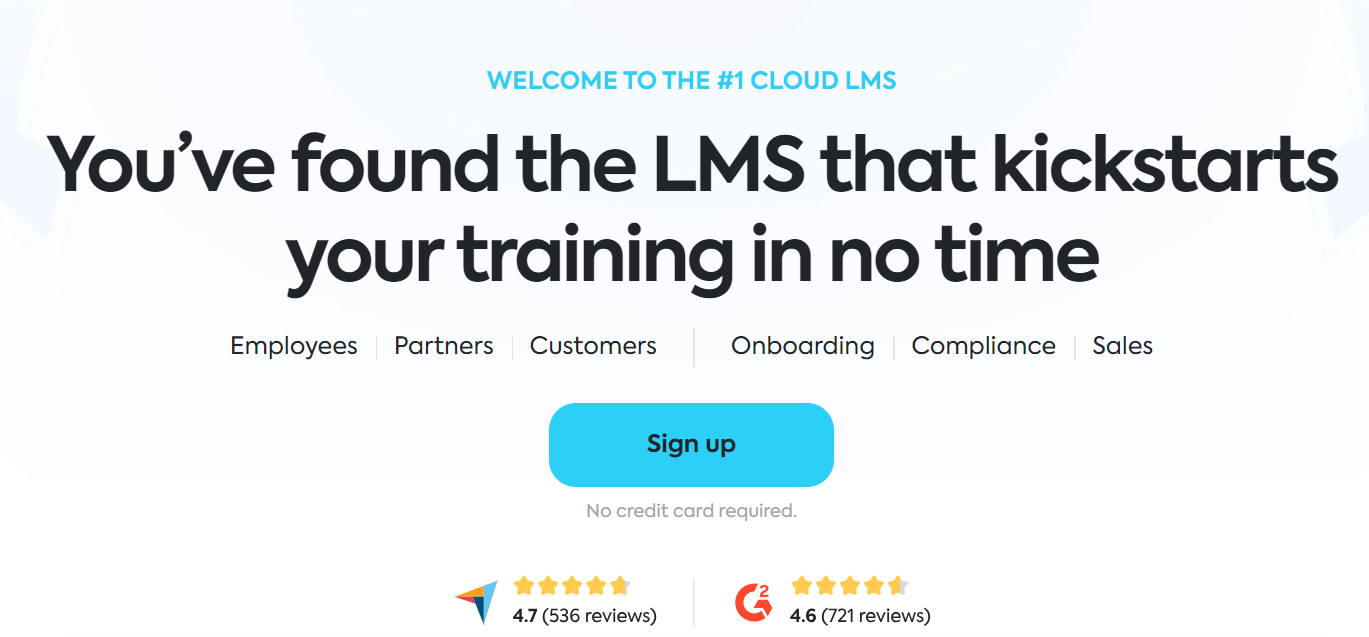
Best asynchronous learning tools and platforms
The majority of asynchronous learning tools and platforms are learning management systems that enable you to create and host self-paced eLearning within them.
Here are the top choices:
3. Moodle
We’ve already spoken at length about how Moodle works with Arlo, but as a standalone platform its great for delivering asynchronous learning and training.
Moodle is an open-source learning management system (LMS) widely used in educational settings ranging from K-12 to higher education and corporate training.
It contains a few key features to be aware of for asynchronous learning:
Customizable Course Design:
Moodle allows educators to create and organize course materials into self-paced modules. This includes uploading pre-recorded lectures, reading materials, and multimedia content, which students can access at their convenience.
Assessment Tools:
The platform supports various assessment methods such as quizzes, assignments, and peer assessments
Discussion Forums:
Moodle includes forums where students can participate in threaded discussions, ask questions, and engage in peer-to-peer learning. Forums help promote interaction and community building even in an asynchronous setting
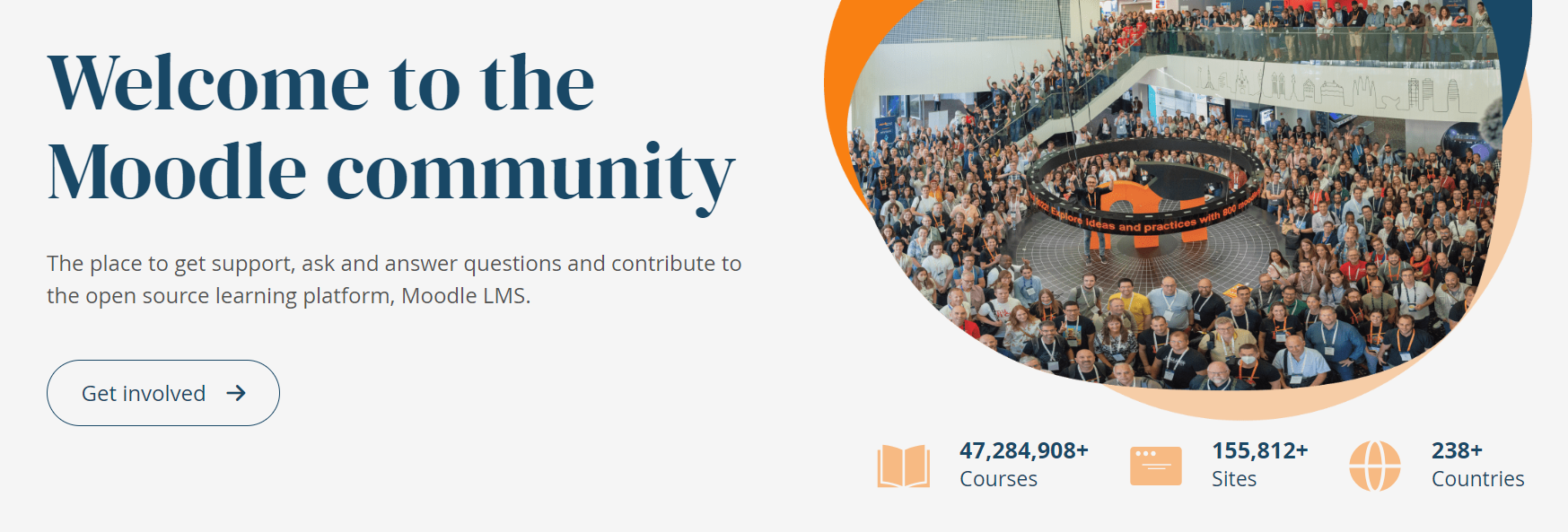
4. Canvas
Canvas LMS is a robust and versatile LMS that offers a wide range of tools and features designed to enhance the flexibility, engagement, and effectiveness of self-paced asynchronous learning. These include:
Modular course design
Courses can be broken down into modules, each containing a variety of learning materials such as readings, videos, quizzes, and assignments that students can complete independently.
Interactive video content:
Canvas supports asynchronous interactive video, allowing educators to embed questions and prompts within videos to engage students and check their understanding.
Assessment Tools:
The platform offers various assessment options, including quizzes, assignments, and peer reviews, which can be completed asynchronously and provide immediate feedback.
Learning Analytics:
Canvas includes robust analytics tools that help educators track student progress, identify areas where students may need additional support, and tailor instruction accordingly.
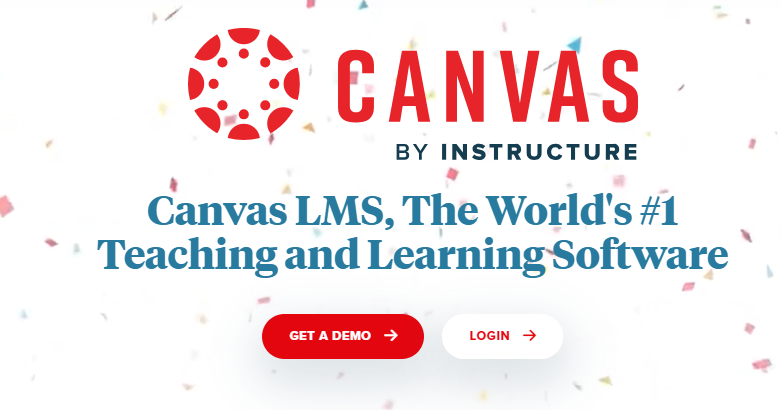
5. Coursera
Coursera is a leading online learning platform that provides access to a wide array of courses, specializations, and degrees from top universities and organizations around the world. Its design is inherently suited for asynchronous learning, allowing students to engage with high-quality educational content at their own pace and on their own schedule.
Key features:
Pre-recorded lectures
Courses typically include video lectures that students can watch at their convenience, allowing them to learn at their own pace.
Flexible deadline
Many courses offer flexible deadlines, enabling learners to complete assignments and assessments when it best suits their schedule.
Interactive quizzes and assignments
Courses often include quizzes and assignments that reinforce learning and provide immediate feedback, helping students gauge their understanding of the material.
Guided projects
Some courses feature guided projects that allow learners to apply their knowledge in practical scenarios, enhancing the learning experience through hands-on activities.
Pre-recorded lecture
The Coursera platform is mobile-friendly, enabling students to access course materials and complete assignments from their smartphones or tablets.

6. edX
edX is an online learning platform that offers a diverse range of courses from top universities and institutions worldwide that allow students to engage with high-quality educational content at their own pace and convenience. It offers 400+ self-paced programs in subjects like computer science, software engineering, and leadership, as well as career bootcamps.
Key features:
Self-Paced Courses
Many edX courses are designed to be self-paced, allowing students to start and complete them according to their own schedules.
High-Quality Content
Courses are developed by leading universities and institutions, ensuring that the material is relevant, rigorous, and up-to-date.

7. Thinkific
Similar to Coursera, Thinkific is an online course platform used by companies, entrepreneurs, and content creators to create and sell courses. You can use it to create online courses, self-paced classes, or scheduled classes. While it is primarily a platform for delivering asynchronous training and learning, it does have features that can help you deliver virtual synchronous training as well.
Other key features to be aware of:
- Certificate completion capabilities
- Community building tools, such as discussion boards
- Multimedia lessons to improve learning engagement e.g. video
- White labeling options to build a branded mobile app.
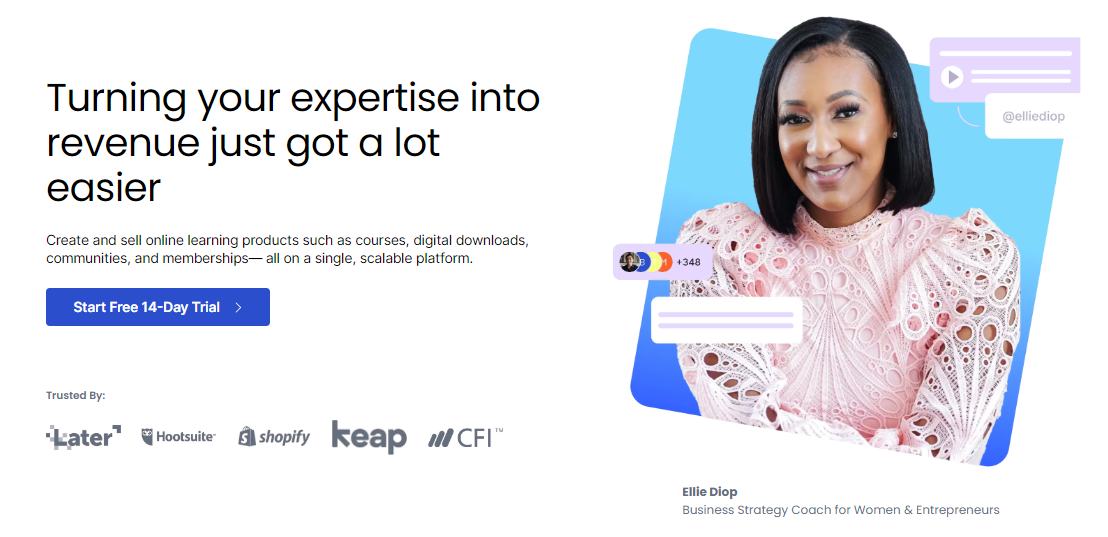
8. LearnWorlds
LearnWorlds is another learning management platform you can use for asynchronous training. It has course creation tools for you to create eLearning courses, this includes an AI assistant that makes it easy to crate courses from scratch. For example, you can use the AI assistant to choose what multimedia elements you want in a course e.g. videos, eBooks, the assessment format e.g. exams or self assessment, and whether the course will be made up of live sessions or self paced modules.
Other key features that facilitate asynchronous learning include:
- Interactive video features and gamification elements
- eLearning website building tools
- Assessment builders
- Marketing tools.
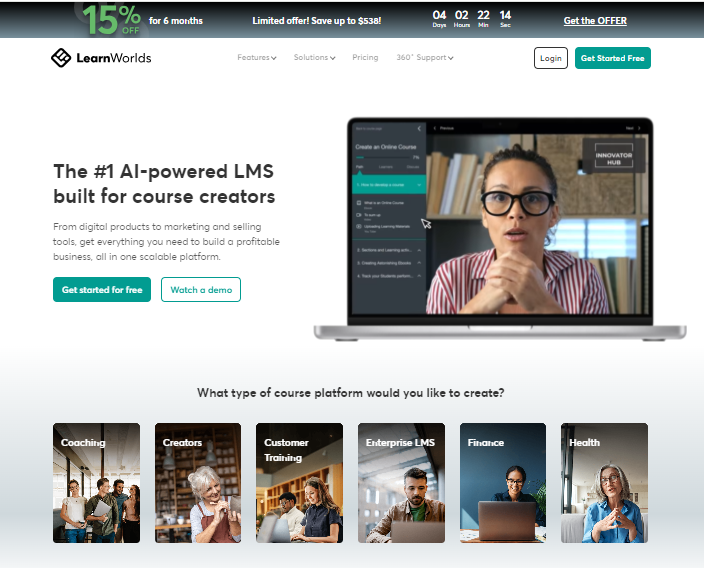
Best synchronous learning tools and platforms
9. Zoom + Arlo
The second Arlo option to feature is the integration with Zoom, which allows you to combine the powers of training management software with the world leading web conferencing software. Zoom allows people to connect virtually from anywhere, across any device and this lends itself to running webinars and hosting online training perfectly for training providers. It’s super easy to use and you can get going in minutes.
You can learn more about how Arlo and Zoom work together here.
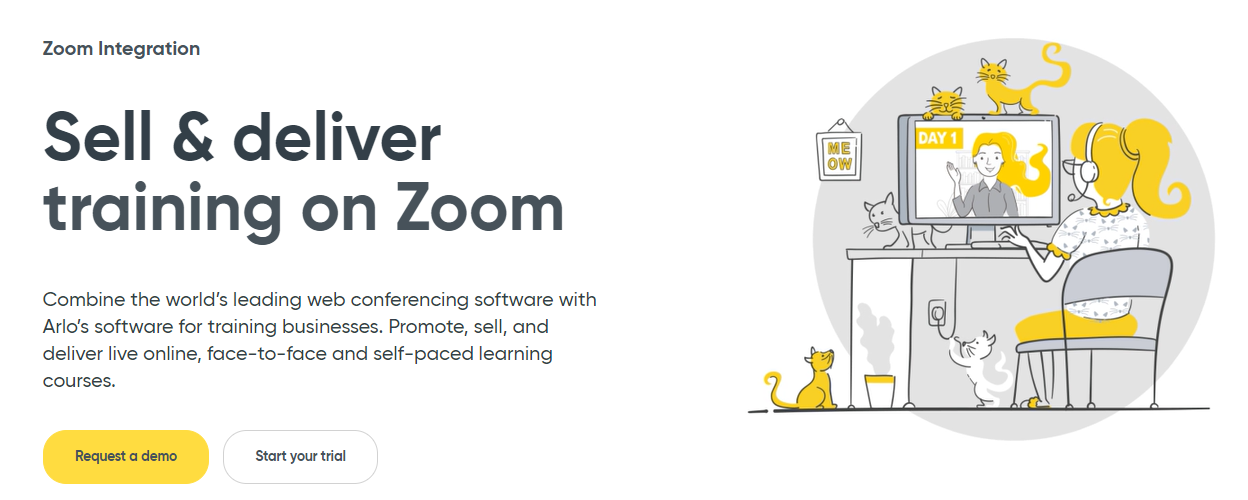
10. Zoom
Of course, you can use Zoom as a standalone platform to deliver synchronous learning. Zoom provides high-quality video and audio conferencing, for easy interaction between instructors and participants.
Its screen-sharing capabilities allow for effective presentations and demonstrations, while the breakout room feature facilitates small group discussions and collaborative activities.
Zoom’s chat function supports instant messaging and Q&A during sessions, and its recording option allows for the capture of sessions for future reference.
They also have a dedicated plan for learning and education available, which you can find out more about here.
11. Microsoft Teams
Microsoft Teams is another platform that can be used on its own to deliver synchronous learning. Teams provides high-definition video and audio conferencing, enabling smooth communication between instructors and learners.
Its screen-sharing capabilities allow instructors to present and demonstrate content effectively. The platform also supports breakout rooms for small group discussions and collaborative work. Teams also includes a chat function for real-time messaging and questions, as well as file sharing and collaboration tools integrated directly into the platform.
With its recording feature, sessions can be captured and revisited as needed, ensuring that learners have access to valuable content even after the live session ends.
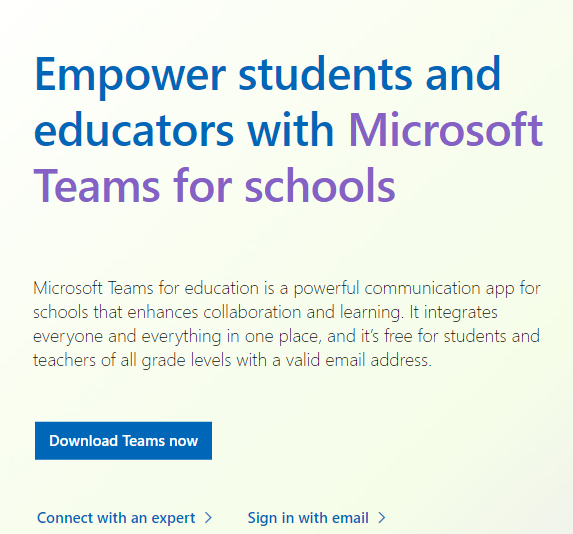
Final thoughts
As you can see, synchronous and asynchronous learning and training platforms complement each other well. Platforms that specialize in delivering synchronous learning and training, such as a TMS, can integrate with platforms that focus on asynchronous learning, like an LMS.
Thus, training providers and educators have ample opportunities to deliver the most effective training and courses for their learners, regardless of the category.
FAQs
Asynchronous or synchronous learning refers to two distinct methods of training delivery. Synchronous learning happens in real-time, such as live virtual classes or instructor-led sessions, while asynchronous online learning allows learners to access training materials, such as recorded videos or discussion boards, at their own pace.
Self-paced learning gives individuals the flexibility to complete training on their own schedule. This is a key feature of asynchronous online learning, which is ideal for busy professionals or those balancing multiple responsibilities.
Blended learning combines both in-person and online learning methods. For example, a program might include classroom workshops for hands-on skills paired with asynchronous learning modules or live synchronous teaching sessions.
An online course platform provides tools for creating and delivering training programs. These platforms often support asynchronous learning options, such as recorded modules, as well as synchronous teaching, like live video classes or webinars.
Asynchronous communication, such as email or discussion boards, lets learners and instructors interact without being online at the same time. It is a key feature of asynchronous online learning, allowing flexibility for participants in different time zones or with varying schedules.
Instructor-led training is most effective when learners benefit from real-time interaction, such as during hands-on activities or group discussions. This is often delivered through synchronous learning methods.
Online learning or online teaching can include live sessions (synchronous teaching) and self-paced modules (asynchronous online learning) that provide flexibility and convenience. Traditional in-person training is better for hands-on or highly interactive sessions that require physical presence.